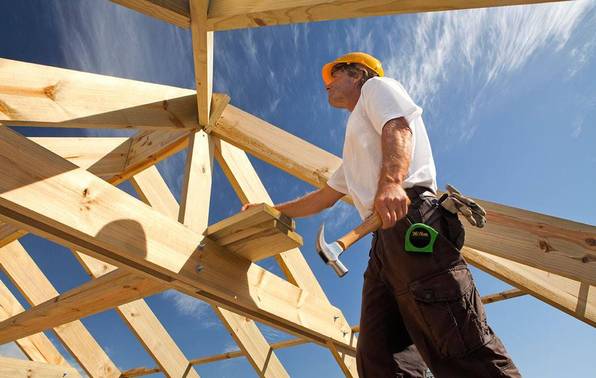
Timber floors
The main problems with timber floors are squeaking/creaking or surface deterioration.
The main problems with timber floors are squeaking/creaking or surface deterioration. Both can indicate more serious problems.
Creaking floorboards
Floorboards may creak if they have shrunk or are damaged, split or warped due to shrinkage or wear.
Creaking floorboards may also rarely be a sign that your floor is infested with borer or some other insect pest, or that it is rotting.
Here’s what to do if the problem is serious:
- In most cases, adding some more fixings, even through carpet, will fix the problem.
- If the floorboards are damaged, split or warped, they can be relifted and relaid.
- If damage is due to rot, you’ll need to address the cause of the moisture. See our article on moisture in the home.
- If the damage is due to borer, you’ll need to have the floor treated or replaced.
Removing mouldy timbers requires skill and care. For advice about dealing with mould, read Dealing with mould in your leaky home from the Ministry of Business, Innovation and Employment’s website. You may need to seek professional advice. Replacement timbers should be treated or naturally resistant to insect attack.
Springy floorboards
Floorboards can be springy because of poorly supported joists or bearers, or more rarely because of borer or rot.
Get under the floor to check that the joists are properly supported by the bearers and that the bearers are fixed to and supported by the piles.
If there is movement of less than 20mm between bearers and the top of the pier/pile you can pack the gap with bituminous felt, fibre cement or other non-compressible material. If the movement is more than 20mm, seek help from a professional.
For advice on dealing with borer or rot see creaking floorboards above.
Damp patches on the floor or floor covering
Damp may ultimately cause timber rot and mould, which is a health hazard.
Address the cause of the damp. Check windows for condensation, pot plants for over-watering and under the floor for high moisture levels. Check the walls or roof for leaks. Allow the floor to dry out. You may need to replace carpet if it has started to rot.
Scratched or damaged timber floors
Damage can look unsightly and if severe could cause the floor to deteriorate prematurely.
To prevent scratches, dust the floor regularly and fit protective pads on furniture legs and castors. Consider using rugs to reduce damage.
Remove scratches to the varnish according to the floor coating manufacturer’s instructions.
Sand and recoat the floorboards. You may be able to repair dents by filling them with coloured wax filler or by using moisture and a warm iron to expand the wood fibres for deeper gouges, although you will still need to sand gently first.
Joints between floorboards opening up
This could be due to shrinkage, a dry interior or high room temperatures or due to adding central heating.
Minor shrinkage can be left alone. For severe shrinkage, lift and re-lay the floor.
Increase ventilation. This may also help to reduce the temperature of the space.
If the area is subject to prolonged direct sunlight you may need to consider shading the floor or laying carpet.
Floorboards bowing
This could be due to the flooring being too dry when installed into a humid room. If so, reduce the moisture to allow the floor to dry. If that doesn’t work, lift the floor, allow the timber to acclimatise in the room, and relay it.
This can also happen if one side of the board is getting wetter than the other for example due to wet mopping. Check our article on under the floor for more information.
Damaged or worn varnish or clear finishes
Damage to the finish can look unsightly and if not recoated, could cause the floor to deteriorate.
If this is just from general wear and tear, sand and recoat the floor with a suitable finish. Check with the floor manufacturer or hardware store for the correct products to use.
If furniture is damaging the floor, consider fitting protective pads on the legs or castors.

Building articles
Whether you're planning to build your own home or renovate an existing one, we've got you covered with a wide range of articles covering the whole process.

Renovating articles
Renovating and altering houses is a favourite pastime for many New Zealanders. Our articles take a look at what's involved when you undertake a renovation project.

Home maintenance
Regular maintenance is needed to ensure your house holds its value and remains safe and comfortable to live in.
Member comments
Get access to comment